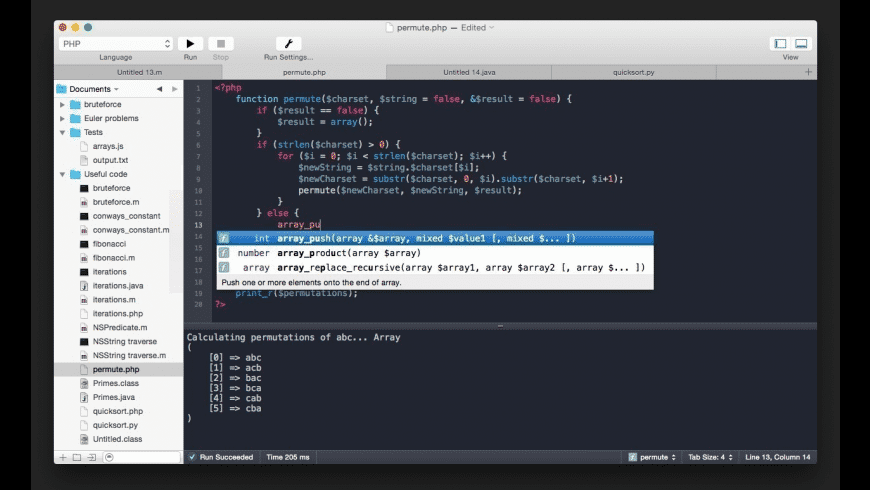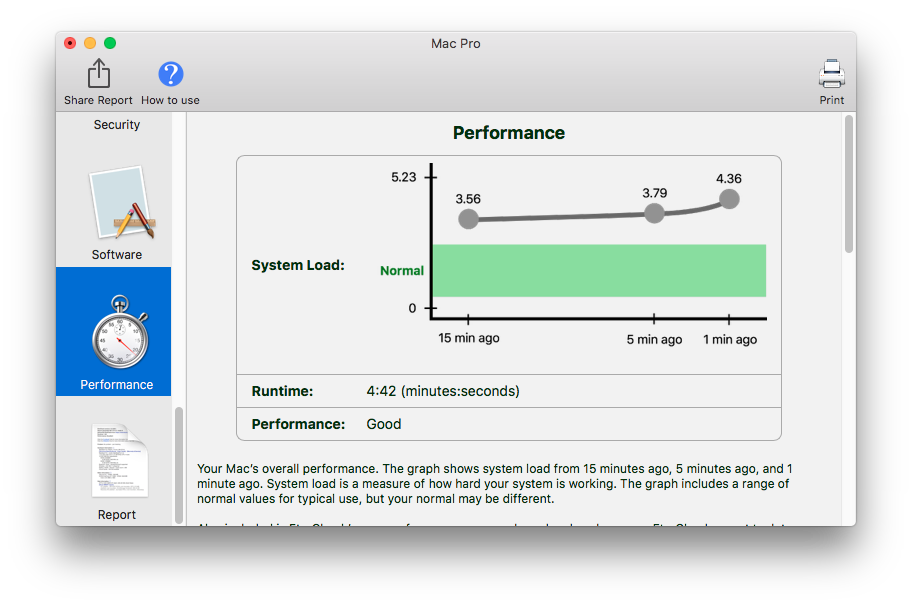Testing For Software Problems On Mac
Modern Macs have a built-in diagnostic test that can be used to help troubleshoot a hardware problem. The technology has changed over the years, and the procedure is determined by how old your Mac is.
________________________
Disk Utility is the first program you should fire up if you suspect disk errors or permission issues, but if that fails to identify the problem or you can't even get your Mac to boot up into the. Jan 15, 2019 An Apple Diagnostics or Hardware Test that reports a lack of problems indicates it could be a software issue. Another alternative worth exploring, especially if your Mac is overheating or slowing down, is that your storage is too full of junk, clutter, applications, and duplicate files and photos. Apr 08, 2014 The first option for testing your drive is to check its SMART (Self-Monitoring, Analysis, and Reporting Technology) status, which is a series of. How to test for bad or faulty RAM on a Mac: How to replace the RAM in your Mac If repeated tests indicate that something is wrong with your Mac's RAM, it's time to do something about the problem. On your Mac, choose Apple menu Restart, then press and hold the D key while your Mac restarts. When the Apple Hardware Test chooser screen appears, select the language you want to use, then press the Return key or click the right arrow button. When the Apple Hardware Test main screen appears, follow the onscreen instructions.
There a many ways a problem can crop up on your Mac. It could be a corrupted or failing boot hard disk or SSD, a flaky peripheral or a damaged or conflicted OS X. This article is restricted to the case where you suspect something is wrong with the very Mac itself.
The first step is to determine the OS version and year your Mac was introduced. One way to do this is to use Apple Menu > About This Mac. (If the introduction date for the product isn't specified, you can use a great app called Mactracker to convert a model number to an introduction date.)
The first applicable document here is Apple support doc #PH18765. In summary, as Apple states it:
- If your Mac is from 2013 or later, use Apple Diagnostics, which is built into your Mac.
- If your Mac is from 2012 or earlier and has OS X v10.8.4 or later, use Apple Hardware Test, which is built into your Mac.
- If your Mac is from 2012 or earlier and has OS X v10.8.4 or earlier, use the system software disc or USB flash drive that came with your Mac.
For this how-to, I'll discuss Macs introduced in June 2013 or later and the Apple Diagnostics.
Apple Diagnostics
The Apple Diagnostics has detailed steps on how to shut down your Mac, which peripherals to disconnect, and how to hold down the D key at boot. Note that there is no prefix key used here. Hold down just the D key right after you hear the startup chime.
Note that if you leave the Ethernet cable plugged in and boot with OPTION + D, you can do some extra things, such as access your support and service options and contact Apple support.
You should review this Apple Diagnistics page and even print it so you have a handy reference during the testing. Especially useful are the keyboard shortcuts that are available.

After booting, you'll see a black screen with a progress bar when the Apple Diagnostics start.
The test takes only a few minutes. When it's done, you see a notice with error Reference codes that describe the likely problem. Apple has an extensive page of error Reference codes that describe the problem(s) found, if any.
Free Mac Software
Test complete and Reference code provided.
If you get the code ADP000, 'No issues found,' you can reconnect your peripherals, reboot and look for the trouble elsewhere. Otherwise, follow the steps listed on the Reference codes page linked above.
Apple has provided a wealth of information that will help you isolate a possible problem with your Mac's hardware.
Most Mac users will experience years of using a Mac without any problems. But every so often, a hardware issue could surface that could significantly impact how your Mac performs.
Identifying the cause of problems — hardware or software — is the first step to fixing them. It could make a trip to an Apple Store or certified reseller easier knowing you've done all you can to identify and whenever possible, fix the problem yourself — saving you downtime and a potentially costly repair.
Built into every Mac is a way to run an Apple Hardware Test, also known as an Apple Diagnostics.
Testing For Software Problems On Mac Windows 10

Hardware Tests are an effective way to identify the cause of a Mac performance problem, which could be CPU or GPU issue, a failing disk drive, an overloaded memory, a fan overheating, or any number of other potential faults. If you suspect it’s a hardware problem, Hardware Tests are the way to troubleshoot on Macs built before 2013. In newer models, those built after 2013, those same tests are labelled Apple Diagnostics.
How to Run Apple Diagnostics on any Mac
In some cases, a hardware problem is so severe that you won’t be able to switch your Mac back on. Thankfully, if you can run an Apple Diagnostics or Hardware Test, Apple Support suggests this is a way you can restart your Mac, even if it refuses to switch back on through other means.
Whether you are running an Apple diagnostics (on newer hardware and OS X devices) or a Mac hardware test (on older devices), Apple recommends printing their support instructions on how to run these tests. Once you’ve got the instructions in front of you, Apple recommends going through the following process to diagnose a hardware problem:
- For those with iMacs or any desktop-based device: Disconnect all external drives and hardware devices, except for the keyboard, mouse, display, and speakers.
- Select Apple Menu > Restart.
- Press and hold the D key when the Mac is restarting.
- Apple Diagnostics will run automatically. When it is complete, it will present a list of the problems encountered.
Common Mac Hardware Issues
At this point, you can either follow on-screen instructions or contact Apple Support — arranging a Genius Bar appointment — or go to an Apple Authorized Service Provider to make repairs, to fix the problems. Make a note of any reference codes.
Some of the most common hardware error codes indicate problems with:
- Wi-Fi — a failure of the AirPort wireless card (4AIR);
- Hard disk and SSD (4HDD)
- Logic board (4IRP)
- Memory — RAM (4MEM)
- External disk (4MHD)
- Fans (4MOT)
- Processor (4PRC)
- Video/graphics card (4YDC)
Most Mac error codes suggest a failure of the component they reference, or a related component that is causing a problem with the hardware. In most cases, an Apple specialist or technician may be needed to resolve this issue.

However, before you send your poor, unhealthy Mac off to the shop, there are several fixes you could try at home, such as resetting the PRAM or SMC. This can fix some of the most common errors, including problems with the logic board and fan.
Disk Utility (built-into every OS X) is useful for fixing memory (RAM), hard disk and external drive problems, as are several third-party apps.
For those with older Macs, when you are running an OS X Hardware Test, an alert message will appear once complete with a list of the problems encountered. Again, you have the option of following on-screen instructions to restore the Mac, or re-booting the device using a startup disk, or taking the Mac to a store or Authorized Service Provider.
In any scenario involving hardware, you need to be aware that you are at risk of losing any items on your Mac that haven't been backed-up to the cloud. We recommend storing as much as you can with a cloud provider, such as Dropbox, or Apple iCloud.
Another way to improve Mac performance
What happens if you run a Mac diagnostics and it comes back with nothing? Does this mean you need to buy a new Mac? Or give up using Mac altogether, switching to another device and operating system?
An Apple Diagnostics or Hardware Test that reports a lack of problems indicates it could be a software issue. Another alternative worth exploring, especially if your Mac is overheating or slowing down, is that your storage is too full of junk, clutter, applications, and duplicate files and photos.
On average, Mac users have 62GB of data, files, apps, and images they do not need. Too many files slow down and overheat computers, making them difficult to use and causing them to crash more often.
CleanMyMac X is designed to clear up junk, clutter and get your Mac back to peak performance. With over 4 million downloads and hundreds of positive reviews, we know that CleanMyMac X has carefully removed over 11 million unnecessary apps and over 2.5 billion gigabytes of data clogging up Macs all over the world.
Mac Software List
With two click removals, you can quickly clean loads of data, making your Mac easier to use and freeing up space for new documents, downloads and images. Once you've run a Hardware Test or Apple Diagnostics, use CleanMyMac X (it's free to try) to identify and fix any other issues that are causing your Mac to run slowly or overheat.
Testing For Software Problems On Mac Download
We hope this article was helpful and you found the answers to all your questions here. Stay tuned!